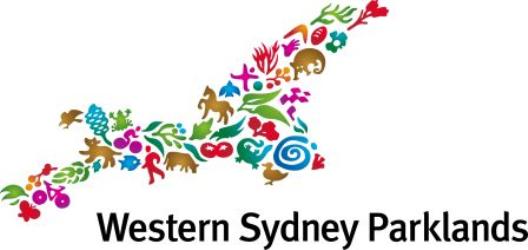Aboriginal heritage
Western Sydney Parklands is on land that is rich in Aboriginal history and heritage, situated within the boundaries of the Deerubbin and Gandangara Local Aboriginal Land Councils.
It is part of the Country of the Gandangara and Darug people. The Darug territory extended from the Blue Mountains to the coast. Spelled in a variety of ways, ‘Darug’ comes from the Aboriginal word for ‘yam’.
The tubers were as a staple food and the Darug people would have also collected a range of fruits, plants and other bush foods. The inland groups associated with the Parklands region (which is part of the Cumberland Plain) probably relied on hunting kangaroos, wallabies and possums. Their coastal neighbours’ diet was based more on fish and seafood.
Numerous sites and artefacts, but particularly lithics, or ‘stone tools’, are evidence of Aboriginal people’s presence on the Cumberland Plain over many thousands of years and demonstrate the importance of the nearby quarry at Plumpton Ridge. Stone known as silcrete was extracted here and used throughout the wider region. Tools made of flaked glass have also been found, showing how Aboriginal people adapted colonial technologies to traditional culture.
Concentrations of artefacts can also indicate where important cultural and ceremonial places may have been located. One significant stone artefact scatter has been found at the Rooty Hill.
Oral history tells us that the Cumberland Plain was an important camping and meeting place for Aboriginal people travelling over the Blue Mountains and into Parramatta and Sydney, even after colonial times.
Historical records and the accounts of early British explorers can also provide invaluable information. In 1788 Governor Arthur Phillip led an expedition to Prospect Hill. During this journey the party saw evidence of Aboriginal encampments in the form of huts, camp fires, burning trees and kangaroo carcasses.
The Darug people’s story in this region is one of adaptation, survival and resilience. These early expeditions were soon followed by colonisation, which had a profound and devastating impact, leading to disease, frontier violence and restricted access to critical resources. This brought a severe reduction in the Darug population, as well as great social, cultural and demographic upheaval.
Important sites both in and near Western Sydney Parklands tell the story of Aboriginal-settler relations in the early colonial period. Prospect Hill was associated with colonial conflict and Aboriginal resistance, but also with an important early act of reconciliation. On 3 May 1805 the Reverend Samuel Marsden facilitated a meeting here between Aboriginal representatives and settlers, and an agreement was reached which brought an end to this particular period of violence.
Colebee was one of two Aboriginal men captured and held at Government House in Sydney in 1789 until he escaped, so he was well known throughout the colony. In 1816, in return for working with colonial government, he and a man named Nurragingy received one of the first-ever land grants to Aboriginal people.
The land is very close to the Parklands, on Richmond Road around Bells Creek. Colebee did not remain long, but Nurragingy stayed on to farm it and it became an important centre for Aboriginal life in the area – one reason why the Blacktown Native Institution was eventually set up nearby.
After their deaths, the land was claimed by two of Nurragingy's sons and Colebee's younger sister, Maria Locke. The Locke family lived there until around 1917, when it was acquired by the Aborigines Protection Board. Today this area is seen as symbolic of Aboriginal resilience and the enduring connection to Country and is commemorated in Nurragingy Reserve.
Bungarribee Park takes its name from the nearby Bungarribee Estate, which was part of the much larger Rooty Hill Government Farm. The name is thought to mean ‘creek with cockatoos’ or ‘creek with campsite’.
Western Sydney Parklands remains an important part of Country for Darug people to this day and falls within the interests of the Deerubbin and Gandangara Local Aboriginal Land Councils.

